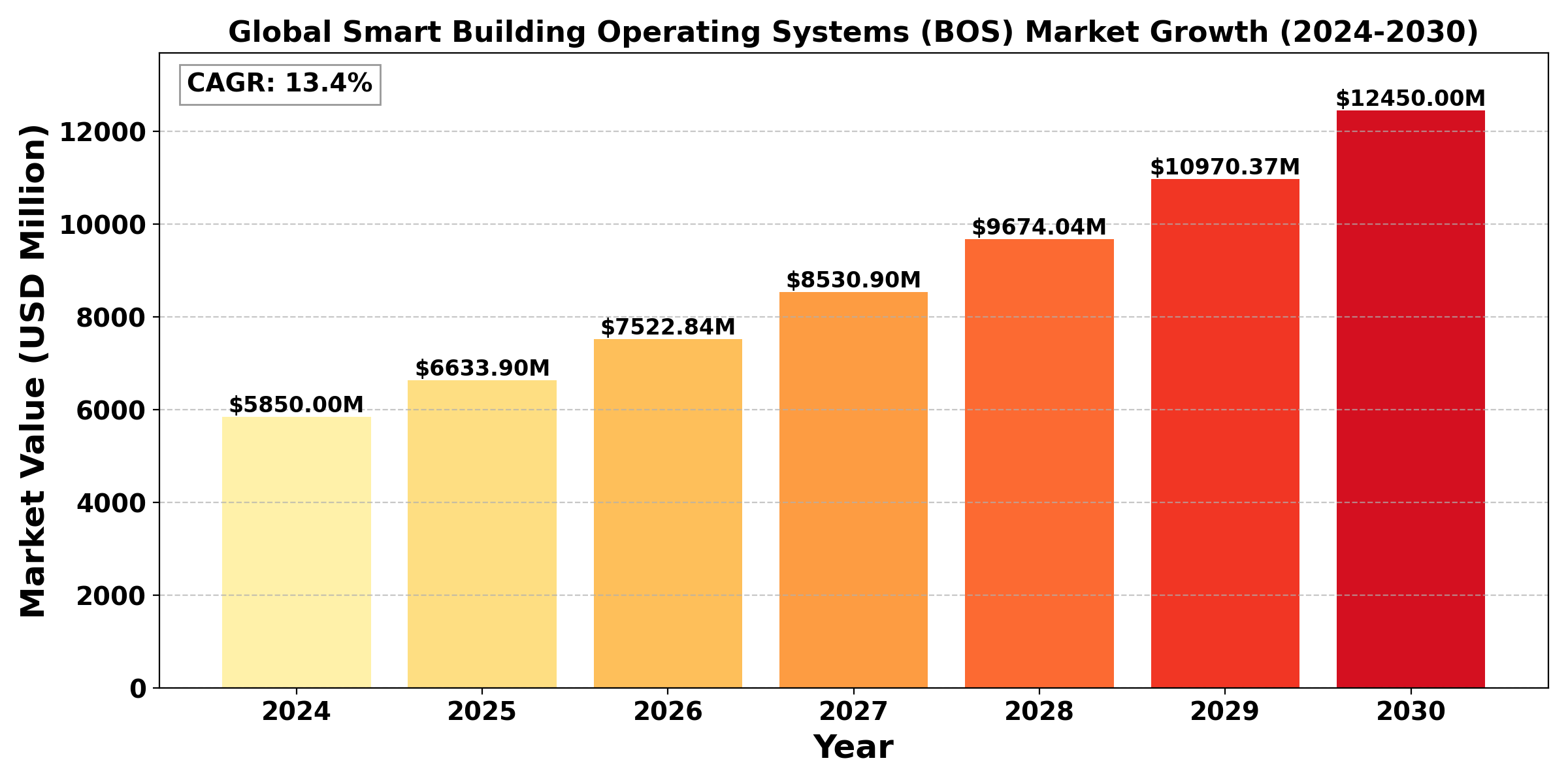TOP CATEGORY: Chemicals & Materials | Life Sciences | Banking & Finance | ICT Media
The "Global Smart Building Operating Systems (BOS) Market" was valued at US$ 5.85 Billion in 2024 and is projected to reach US$ 12.45 Billion by 2030, at a CAGR of 13.4% during the forecast period 2024-2030.
A Smart Building Operating System (SBOS) is a centralized software platform that integrates and manages various systems within a building, such as HVAC, lighting, security, and energy management. It uses data analytics, IoT, and automation to optimize building performance, improve energy efficiency, and enhance occupant comfort and safety.

The global key manufacturers of Smart Building Operating Systems include Honeywell, Johnson Controls, Siemens, Schneider Electric, Trane Technologies, Carrier, IBM, Cisco Systems and Intel, etc. in 2023, the global top five players have a share approximately % in terms of revenue.
Smart Building Operating Systems (BOS) refer to software platforms that integrate various building systems and components into a single, centralized platform that enables intelligent management and control of a building's operations. This includes systems such as HVAC, lighting, security, access control, and energy management.
The goal of a Smart Building Operating System is to improve building efficiency, reduce energy consumption, and enhance occupant comfort and safety. By integrating all building systems and components into a single platform, BOS allows building managers and operators to monitor and control building operations more effectively and efficiently, often in real-time.
Smart Building Operating Systems leverage various technologies such as the Internet of Things (IoT), sensors, machine learning, and data analytics to collect and analyze data from various building systems, identify patterns and trends, and optimize building operations. This can result in significant cost savings for building owners and managers, as well as improved occupant satisfaction.
Overall, Smart Building Operating Systems are becoming increasingly important in the management and operation of modern buildings, as they offer a more streamlined and efficient approach to building management, maintenance, and control.
This report aims to provide a comprehensive presentation of the global market for Smart Building Operating Systems, with both quantitative and qualitative analysis, to help readers develop business/growth strategies, assess the market competitive situation, analyze their position in the current marketplace, and make informed business decisions regarding Smart Building Operating Systems. This report contains market size and forecasts of Smart Building Operating Systems in global, including the following market information:
We surveyed the Smart Building Operating Systems companies, and industry experts on this industry, involving the revenue, demand, product type, recent developments and plans, industry trends, drivers, challenges, obstacles, and potential risks.
Total Market by Segment:
Chapter 1: Introduces the definition of Smart Building Operating Systems, market overview.
Chapter 2: Global Smart Building Operating Systems market size in revenue.
Chapter 3: Detailed analysis of Smart Building Operating Systems company competitive landscape, revenue and market share, latest development plan, merger, and acquisition information, etc.
Chapter 4: Provides the analysis of various market segments by type, covering the market size and development potential of each market segment, to help readers find the blue ocean market in different market segments.
Chapter 5: Provides the analysis of various market segments by application, covering the market size and development potential of each market segment, to help readers find the blue ocean market in different downstream markets.
Chapter 6: Sales of Smart Building Operating Systems in regional level and country level. It provides a quantitative analysis of the market size and development potential of each region and its main countries and introduces the market development, future development prospects, market space of each country in the world.
Chapter 7: Provides profiles of key players, introducing the basic situation of the main companies in the market in detail, including product sales, revenue, price, gross margin, product introduction, recent development, etc.
Chapter 8: The main points and conclusions of the report.